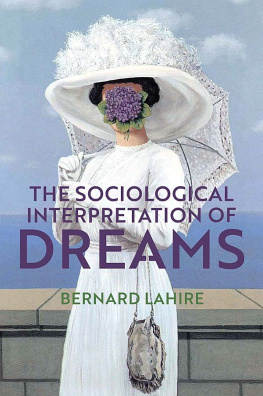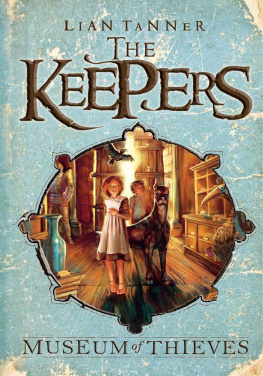Jeremy Tanner - Max Bandall and the Sociological Interpretation of Art
Here you can read online Jeremy Tanner - Max Bandall and the Sociological Interpretation of Art full text of the book (entire story) in english for free. Download pdf and epub, get meaning, cover and reviews about this ebook. publisher: SAGE, genre: Art. Description of the work, (preface) as well as reviews are available. Best literature library LitArk.com created for fans of good reading and offers a wide selection of genres:
Romance novel
Science fiction
Adventure
Detective
Science
History
Home and family
Prose
Art
Politics
Computer
Non-fiction
Religion
Business
Children
Humor
Choose a favorite category and find really read worthwhile books. Enjoy immersion in the world of imagination, feel the emotions of the characters or learn something new for yourself, make an fascinating discovery.
- Book:Max Bandall and the Sociological Interpretation of Art
- Author:
- Publisher:SAGE
- Genre:
- Rating:3 / 5
- Favourites:Add to favourites
- Your mark:
- 60
- 1
- 2
- 3
- 4
- 5
Max Bandall and the Sociological Interpretation of Art: summary, description and annotation
We offer to read an annotation, description, summary or preface (depends on what the author of the book "Max Bandall and the Sociological Interpretation of Art" wrote himself). If you haven't found the necessary information about the book — write in the comments, we will try to find it.
Max Bandall and the Sociological Interpretation of Art — read online for free the complete book (whole text) full work
Below is the text of the book, divided by pages. System saving the place of the last page read, allows you to conveniently read the book "Max Bandall and the Sociological Interpretation of Art" online for free, without having to search again every time where you left off. Put a bookmark, and you can go to the page where you finished reading at any time.
Font size:
Interval:
Bookmark:
Michael Baxandall and the Sociological Interpretation of Art
Jeremy Tanner
University College London, UK
A B S T R AC T
Art historian Michael Baxandalls writings have played a key role in defining the major paradigms in the sociology of art: the production of culture perspective, Bourdieus critical sociology of art, Hennion and DeNoras new sociology of art.
Although making fruitful use of Baxandalls focus on markets, material visual practices and the concept of the period eye, these appropriations have overlooked the centrality to Baxandalls work of the concept of art as an institution. This institutional focus permits Baxandall to integrate social, cultural and visual analysis in a way which shows not only how visual art is socially constructed, but also how it plays an active role in the construction of social orders on a variety of levels of emergence, from the interaction order to larger social structures.
K E Y WO R D S
aesthetics / art history / Pierre Bourdieu / Michael Baxandall / cultural production/ new sociology of art / sociology of culture
The death of Michael Baxandall in 2008 certainly represented a significant loss for the community of art historians. As a pupil of Ernst Gombrich, and a former student of the Warburg School, Baxandall was perhaps the last great representative of the intellectual spirit represented by the Warburg tradition.
But Baxandalls legacy is one which is of equal importance to the sociology of art, and, at the close of an extraordinarily fruitful career, it is perhaps now an appropriate moment to reflect on and assess the character of that legacy. No art historian has exercised so much influence on the development of the sociology of art in the last 30 years as Baxandall. His interest in markets and patronage made him a natural point of reference for work in the production of culture perspective, such as Howard Beckers (1982) Art Worlds. His efforts to formulate a general theoretical model for the historical explanation of pictures have been a major influence on a number of attempts to construct systematic methodologies in the sociology of culture, and indeed beyond, from Wendy Griswolds classic A Methodological Framework for the Sociology of Culture (1987a) to Richard Biernackis (2005) more recent attempt to formulate a problem-solving model of social action to replace the means-end model characteristic of most work in historical sociology.1 Baxandalls period eye concept has spawned notions of the gendered eye and the contextual eye, among others, informing sociological studies of literature (Griswold, 1987b), public art (Babon, 2006) and interaction in art museums (Heath and Vom Lehn, 2004).
Painting and Experience impressed Pierre Bourdieu sufficiently to be the focus of a special issue of Actes de la recherche en sciences sociales (Bourdieu and Desault, 1981a, 1981b) and Bourdieu returned to Baxandall in his last great study in the sociology of art, The Rules of Art (1996). More recently, Antoine Hennion has invoked Baxandall as a theoretical model, and guiding spirit, in what has been called the new sociology of art, characterized by a focus on the materiality of art works themselves and their specifically aesthetic properties and effects (De La Fuente, 2007).
But behind this almost universal approval lie several major paradoxes. First, as the quotations at the head of this article suggest, Baxandall himself manifests a very high level of ambivalence about the social, and its place in the understanding of art. On the one hand we have the Durkheimian rhetoric of the introductory statements in Painting and Experience; on the other, the almost complete disavowal of sociological pretensions in Patterns of Intention. Second, Baxandalls work serves as a model for approaches to the sociology of art that are, on the face of it, incompatible. Bourdieu (1996: 2045), for example, explicitly takes issue with the work of Howard Becker and his followers in the production of culture paradigm. In turn, Hennions art-sociology is openly formulated as an attack on Bourdieus critical sociology of art (Hennion, 1995; Hennion and Grennier, 2001). Third, within the field of art history, Baxandall is not regarded as a social historian of art at all, but rather as the founder of the visual culture paradigm, which has facilitated the integration of art history into the larger field of cultural studies (Clunas, 2003; Jay, 2002: 271); not, one might have thought, a path which the sociology of art would wish to follow.
This article seeks to assess the legacy of Michael Baxandall to the sociology of art against this apparently contradictory background. The first part sketches an outline of Baxandalls main arguments in Painting and Experience. My intention, however, is not to offer an orthodox account of the real Michael Baxandall, but rather to establish a base line against which to explore the radically diver-gent appropriations of Baxandalls work made by different schools within the sociology of art, and indeed art history. Reading Baxandall through these refracting lenses brings out in a more analytically explicit manner certain strands of theoretical argumentation which often remain implicit in Baxandalls own work, embedded in his detailed analysis of specific historical cases. Further, placing each of these frameworks in particular Bourdieus critical sociology and the new sociology of art of Hennion and DeNora in close comparison with Baxandalls studies illustrates certain respects in which his work, far from having been simply absorbed and superseded, still has lessons to offer us today. The final section of the article draws on Baxandalls Limewood Sculptors ofRenaissance Germany (1980) a work surprisingly overlooked by most sociologists of art to argue that Baxandall develops an institutional approach which has the potential coherently to integrate dimensions of analysis currently split across competing paradigms into a fully historical sociology of art.
Painting and Social Experience: Art and Society in the Work ofMichael Baxandall
In three brief chapters, Painting and Experience (1972) seeks to demonstrate Baxandalls claim that the style of pictures is a proper material of social history.
The first chapter, Conditions of Trade, shows how the social and economic organization of artistic production, evidenced by contracts, is manifested in the visual character of quattrocento art and painting. Some patrons chose to pay by the foot, others according to the time spent by the painter, and the materials he used; the character and quality of the paintings they received match their implicit assumptions about the character of the work that painting entailed (1972: 1).
Different types of commission entailed different types of control, from the relatively direct control and detailed supervision manifested in the contracts between painters and individual private clients princes, priors, ordinary citizens to the rather incomplete lay control exercised on the employees of large communal enterprises, sculptors like Donatello working on the Cathedral in Florence, under the administrative control of the Wool Guild (1972: 5). Conspicuous material consumption could be harmonized with the ostensibly religious motivations of most commissions through the use of specific materials. For example, the importance of the Virgin Mary in a painting, and the donors piety, might be registered through the use of costly ultramarine to give her cloak a striking blue immediately recognizable to contemporary viewers (1972: 11). Status distinction shaped the ways in which patrons chose to display their munificence, shifting from an emphasis on pure materiality to one on skill. Carefully depicted landscapes replaced gold as the preferred backdrop to figure paintings when members of the established elite sought to distance themselves from the newly wealthy by adopt-ing more cultivated, less flashy, modes of display, informed by humanist thought and ascetic strands of contemporary religious culture (1972: 1415). As Baxandall emphasizes, these relationships, and the choices made by both patrons and painters, all operated within institutions and conventions, which helped to articulate the patrons demands for an altarpiece, frescoes for a family chapel, a Madonna for the bedroom and to formulate briefs for the artist in highly routinized ways (1972: 13).
Next pageFont size:
Interval:
Bookmark:
Similar books «Max Bandall and the Sociological Interpretation of Art»
Look at similar books to Max Bandall and the Sociological Interpretation of Art. We have selected literature similar in name and meaning in the hope of providing readers with more options to find new, interesting, not yet read works.
Discussion, reviews of the book Max Bandall and the Sociological Interpretation of Art and just readers' own opinions. Leave your comments, write what you think about the work, its meaning or the main characters. Specify what exactly you liked and what you didn't like, and why you think so.








